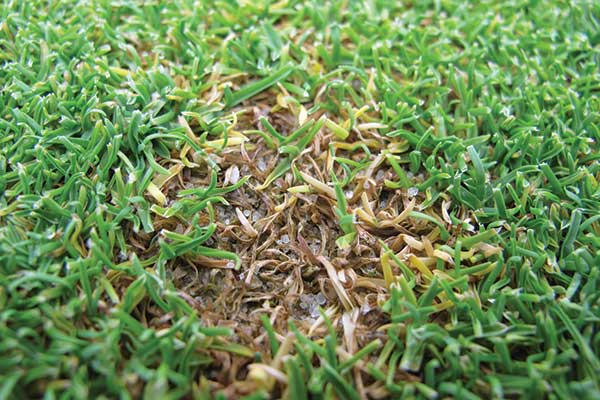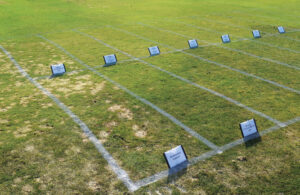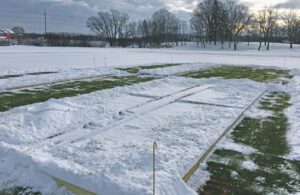Super Science: A year of research in review
Tropical signalgrass — bringing an old foe to its knees?
By Bert McCarty, Ph.D.
Much research and product introduction have a problematic weed finally on the back burner.
- Tropical signalgrass is a warm-season perennial grass that spreads by stolons or seed and occurs when soil temperatures reach 77 degrees F (25 degrees C).
- Herbicide application timing is improved with a careful mapping of infested areas and recording spray applications.
- Fall herbicide applications are most effective, though, in many situations, interfere with fall overseeding or do not allow sufficient time for turf recovery before winter.
- All products and combinations will require multiple applications to achieve adequate control.
- To lengthen control, include a preemergence herbicide such as indaziflam, oxadiazon or prodiamine.
BMPs for anthracnose on annual bluegrass putting greens
By Bruce Clarke, Ph.D., James Murphy, Ph.D., and John Inguagiato, Ph.D.
Researchers at Rutgers University developed best management practices for anthracnose (Photo 4) while busting myths from the past.

Photo 4 Researchers at Rutgers University have developed best management practices for anthracnose. In this photo, leaves have turned yellow to brown and are sprinkled with black spore-bearing structures. (Photo: James Hempfling)
- Plant nutrient deficiencies, ultralow mowing and excessively wet or dry irrigation programs are critical stress factors that significantly increase the risk of severe damage from anthracnose.
- Avoiding deficiencies in nitrogen and potassium is critical to reducing anthracnose severity.
- The combination of three BMPs (increased nitrogen, higher mowing and greater topdressing) can suppress anthracnose to acceptable levels without the use of fungicides.
- At lower mowing heights (<0.125 inch) to improve green speed, use higher nitrogen and routine topdressing practices to reduce anthracnose severity.
- Routine topdressing is most beneficial under conditions of lower mowing and lower nitrogen fertilization.
- Fungicide efficacy is improved, and a reduction in fungicide inputs (as much as 80 percent) is feasible with the adoption of BMPs.
- Following these BMPs with early-curative sprays can result in significant reductions in fungicide inputs and excellent disease control.
Snow mold strikes again
By Paul Koch, Ph.D.
Snow mold pressure was very high across Wisconsin and the Upper Midwest (Figure 2) showing minor environmental changes in a small area can lead to large changes in disease development.

Figure 2 Average monthly snowfall in Madison, Wis., has increased over the last 10 years in January and February but has fallen significantly in November and December. December is usually a critical time for snow mold development. The figure is taken from the website https://news.wisc.edu/new-weather-normals-show-how-madisons-climate-has-changed-over-40-years/.
- Snow mold breakthrough on fungicide-treated turf was very rare, suggesting that snow mold applications made in October and November knocked back the fungal population.
- We see increases in snow mold control when fungicide applications are made at heating degree day accumulations right around 100 (i.e., from July 1 of each year, record how much below 50 degrees F the average daily temperature was during the day).
- We have not found alternative methods (e.g., Civitas or phosphites) to control snow mold in areas where snow cover persists.
- The combination of three or more active ingredients applied at Marquette, Wis., resulted in 16 of 63 treatments with less than 5 percent disease, and at Wausau, Wis., 28 of the 63 treatments allowed less than 1 percent disease to occur.
- Almost all effective mixtures included a DMI fungicide (tebuconazole or propiconazole), a contact fungicide (chlorothalonil or PCNB) and an additional active ingredient such as pyraclostrobin, azoxystrobin or iprodione.










